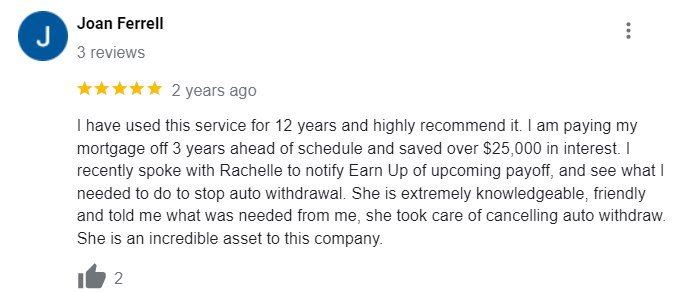Want to pay off debt fast and build wealth? The snowball budget method might be your secret weapon. It’s not some fancy financial trick – it’s a simple, powerful way to tackle debt head-on and come out on top.
The concept is easy: focus on paying off your smallest debt first, while making minimum payments on the rest. Once that’s knocked out, roll that payment into your next-smallest debt. Watch your debt disappear as your “snowball” grows!
But does it really work? You bet. The snowball budget keeps you motivated with quick wins, so you stay the course. And by the time you’re debt-free, you’ve built a habit of smart money management that propels you to lasting wealth.
What Is the Debt Snowball Method?
The debt snowball method is a powerful strategy for paying off debt fast. It’s a simple but effective approach that can help you get out of debt and stay motivated along the way. Here’s the deal: with the debt snowball method, you focus on paying off your smallest debts first, while making minimum payments on your larger debts. As you knock out each small debt, you gain momentum – just like a snowball rolling down a hill. Using the debt snowball method is easy. First, list out all your debts from smallest to largest balance. Don’t worry about interest rates – we’re focusing on the size of each debt. Next, start throwing as much money as you can at your smallest debt, while still making minimum payments on the rest. Once that smallest debt is gone, take the money you were putting towards it and roll it into paying off the next smallest debt.
Why the Debt Snowball Method Works
The debt snowball method works because it’s all about building momentum and staying motivated. Paying off those small debts quickly gives you a sense of accomplishment and the motivation to keep going. According to a study by NerdWallet, the debt snowball method can help you pay off debt faster because it keeps you motivated with quick wins.
An Example of the Debt Snowball in Action
Let’s say you have the following debts:
- $500 medical bill
- $2,500 credit card debt
- $7,000 car loan
- $15,000 student loan
With the debt snowball method, you’d start by paying as much as possible on the $500 medical bill while making minimum payments on the rest. Once that’s paid off, you’d take the money you were putting towards the medical bill and add it to your payment on the credit card debt. Once the credit card is paid off, you’d take that payment and add it to your car loan payment. And finally, once the car loan is gone, you’d be able to put all that money towards your student loan until you’re completely debt-free.
Debt Snowball vs. Debt Avalanche: Which Is Better?
When it comes to paying off debt, the debt snowball isn’t the only game in town. Another popular strategy is the debt avalanche method.
Pros and Cons of the Debt Snowball Method
The main advantage of the debt snowball is the motivation factor. It feels good to see those small debts disappearing quickly, which can give you the momentum to keep going. And according to The Balance, research has shown that people are more likely to stick with the debt snowball method long-term. On the downside, the debt snowball method doesn’t take interest rates into account. That means you might end up paying more in interest over time compared to other methods. With the debt avalanche, you focus on paying off your debts with the highest interest rates first. The advantage here is that you’ll save money on interest over time. However, your highest interest debts are often your largest balances, which means it can take a while to see progress. And if you lose motivation, you might be more likely to give up.
Factors to Consider When Choosing a Debt Payoff Strategy
So which method is right for you? It really depends on your personality and situation. If quick wins help you stay motivated, the debt snowball might be the way to go. But if you’re more analytical and want to optimize for interest savings, the debt avalanche could be a better fit.
Tips for Staying Motivated During Your Debt Payoff Journey
No matter which debt payoff strategy you choose, staying motivated is key. Paying off debt is a marathon, not a sprint, and it’s easy to lose steam along the way. One way to stay motivated is to celebrate your progress along the way. Paid off a credit card? Treat yourself to a small reward. Hit the halfway point in your debt payoff journey? Take a moment to reflect on how far you’ve come.
Finding an Accountability Partner
Another tip is to find an accountability partner – someone who can cheer you on and keep you on track. This could be a friend, family member, or even an online community of people working towards similar goals.
Visualizing Your Debt-Free Life
Finally, take some time to visualize what life will be like when you’re debt-free. What will you do with that extra money each month? How will it feel to have that weight lifted off your shoulders? Keep that vision in mind when things get tough.
Incorporating the Debt Snowball into Your Budget
If you’re sold on the debt snowball method, the next step is to incorporate it into your budget. Start by looking at your current budget and finding areas where you can cut back. Could you eat out less often? Cancel some subscriptions? Find a cheaper cell phone plan? Every extra dollar you can put towards debt will help speed up your progress.
Finding Extra Money to Put Towards Debt
In addition to cutting expenses, look for ways to boost your income. Could you pick up a side hustle? Sell some stuff you don’t need anymore? Negotiate a raise at work? The more money you can throw at your debt snowball, the faster it will grow.
Using Budgeting Tools to Track Your Progress
Finally, consider using a budgeting tool to track your debt payoff progress. There are plenty of apps and spreadsheets out there specifically designed for the debt snowball method. Find one that works for you and use it to stay organized and motivated.
Knock out debt fast with the snowball method: start small, gain momentum, and keep going. It’s simple – list debts from smallest to largest, hit the little ones hard while paying minimums on bigger ones. Celebrate wins and stay motivated for a debt-free life.
FAQs in Relation to Snowball Budget
What is a snowball budget?
A snowball budget means tackling small debts first, then rolling those payments into bigger ones to squash debt fast.
Does the debt snowball really work?
Yes. By focusing on small wins, you build momentum and confidence, which helps knock out larger debts over time.
What is the snowball structure in finance?
In finance, the snowball structure refers to paying off debts from smallest to largest to speed up debt freedom.
How do you calculate snowball effect?
List your debts from smallest to largest. Pay minimums on all but the tiniest; attack that one with extra cash.
Conclusion
The snowball budget is a game-changer for anyone tired of being shackled to debt. By focusing on small victories and building momentum, you can melt away debt faster than you ever thought possible.
But the real magic happens when your debts are gone, and you keep that snowball rolling – right into building wealth. With the discipline and habits you’ve developed, financial freedom is within reach.
So, ready to give your finances a fresh start? Give the snowball budget a try. With a bit of grit and focus, you’ll be amazed at how fast your money situation can do a 180 – setting you on the path to living out your biggest dreams.










